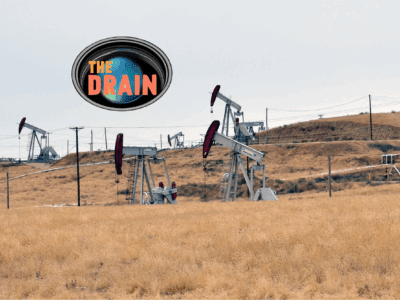Newsom’s Gas Car Phaseout is a Big Step Forward for California
A long road ahead, but undoubtedly moving in the right direction
On Wednesday, Governor Newsom issued an executive order that, among other things, directed the California Air Resources Board to develop regulations moving the state to 100 percent zero-emission passenger vehicles by 2035. The order is a long way from taking effect–at a minimum, ARB’s rulemaking process will take many months, any regulations would involve a decade-long phaseout, and an adverse outcome in the November election would leave a hostile EPA standing in the way–but it represents a major step for clean vehicle policy in California and the entire country.
Although the executive order is not binding, it sends an invaluable signal about the state’s intentions on climate and public health, and with ambitious and effective implementation it could set California (as well as the dozen other states that follow California’s regulatory lead) on a path toward clean transportation.
As the Governor acknowledged, combusting fossil fuels to power our vehicles is fundamentally incompatible with long-term climate and public health. Passenger vehicles are the single largest segment of California GHG emissions, at nearly thirty percent of the total. (The executive order also deals with heavy-duty vehicles, which are a smaller cohort but far more polluting.) Even as the state has made significant progress in decarbonizing its electrical grid, transportation emissions have steadily grown over the last decade. These emissions not only contribute to climate change, but also disproportionately harm the environmental and human health of vulnerable communities located closest to highway infrastructure (as well as those located closest to oil extraction sites that fuel the vehicles).
Eliminating fossil fuel-powered vehicles is critical to slowing climate change and protecting California communities. The Governor’s move will not achieve either goal without significant regulatory and legal work to come, and state leaders will need to develop a tremendous amount of detail out of the Governor’s four pages. But a few key notes are clear:
- The oil and gas industry’s claims that the transition will be too expensive, or will shift us away from reliable fuels, are pure misdirection. The Governor’s phaseout date is 15 years from now. Fifteen years ago the Nissan Leaf, Chevy Bolt, and Tesla Model 3 were not on the road. Now these are among the most popular vehicles available in California, and they are nearing cost parity with traditional vehicles.
- Charging infrastructure will be essential to facilitate this transition, and government support will be necessary in particular for lower-income communities and multifamily buildings. The executive order acknowledges this, directing ARB, the Public Utilities Commission, and other agencies to ramp up charging investment programs.
- Gas-powered vehicles are inextricably linked to oil extraction. California is a leading oil producer nationwide, and phasing out this industry is also a climate and public health imperative. Ensuring this phase-out is just for the most impacted communities is equally important. The executive order also directs state regulators to develop strategies to close abandoned wells, improve enforcement, and protect public health–but a more robust, structured phase-out plan is needed.
- We need much greater understanding of the sustainability of electric vehicle batteries, both in terms of human rights and environmental concerns and in terms of ensuring adequate supplies to meet state vehicle needs.
- Rebates and incentives are essential. The state and federal governments need to significantly ramp up their financial support for electric vehicles, including elimination of the 200,000 vehicle-per-manufacturer cap on federal tax incentives.
These are just a few of the many issues raised by the Governor’s order. The electrical grid will need significant new investment to support increased demand; utilities will need to reform rates to facilitate faster charging; automakers will need to develop cheaper and longer-range batteries; and ARB rules will likely need to receive a Clean Air Act waiver, which the Trump administration has already stated it would not grant, and which would be heavily litigated even if granted by a future administration interested in tackling climate change. (Although it’s possible that an outright ban on gasoline vehicle sales in California, without any emission control standards in the middle, could evade Clean Air Act issues altogether.)
And electric vehicles are not the only answer to reducing transportation emissions. Public transit, shared mobility, biking and walking–all supported by denser, more livable communities–are the most efficient ways we can move around our communities. The executive order acknowledges this, though the policy and investment pathway is even less clear than it is for automobiles.
Addressing these issues over the coming 15 years will be a major lift for state regulators, automakers, and car buyers. Given the imperative of climate change–as well as California’s ability to bring the rest of the country along, and the incredible development of the EV industry in the last decade–it is a step in the right direction.






Reader Comments